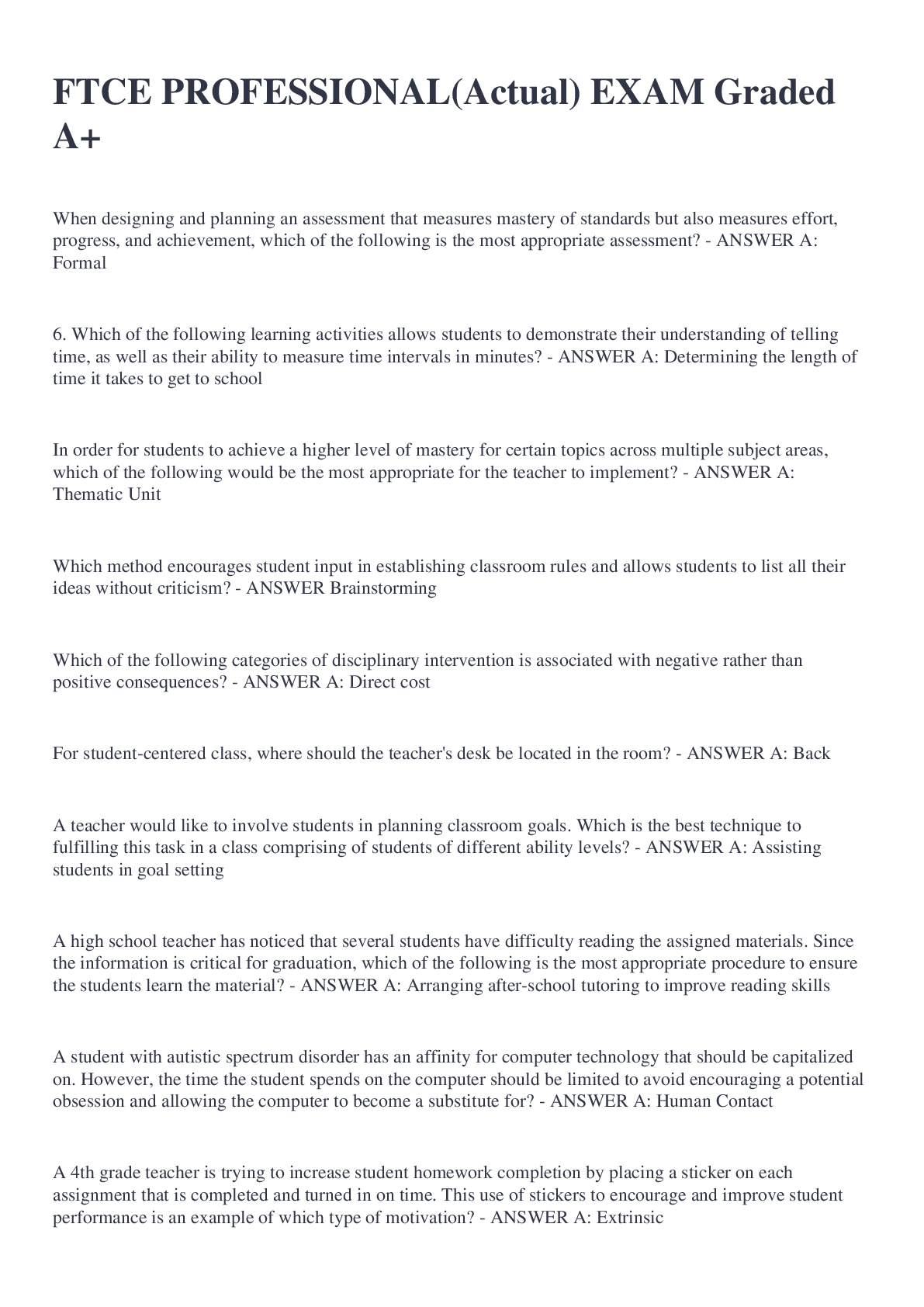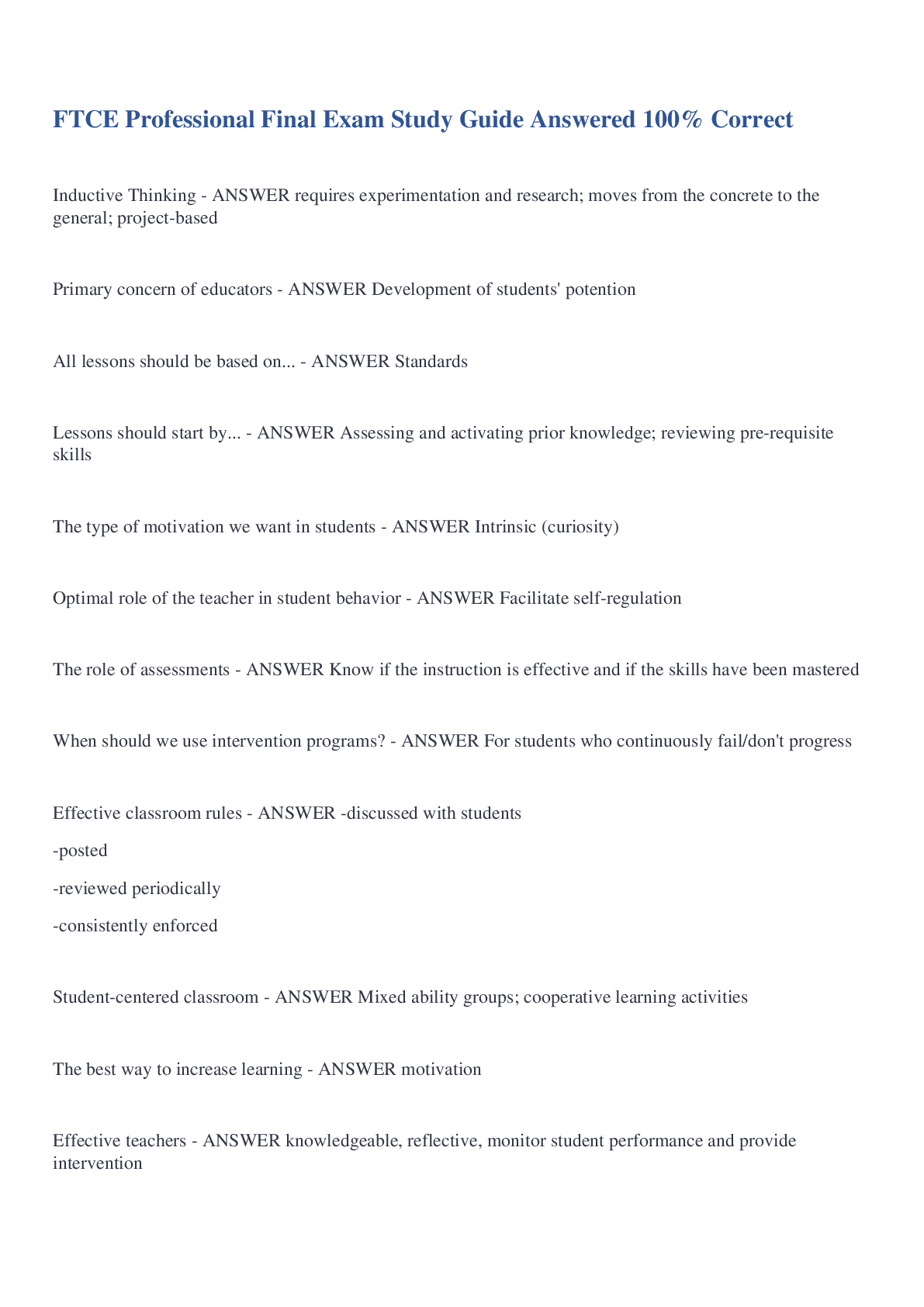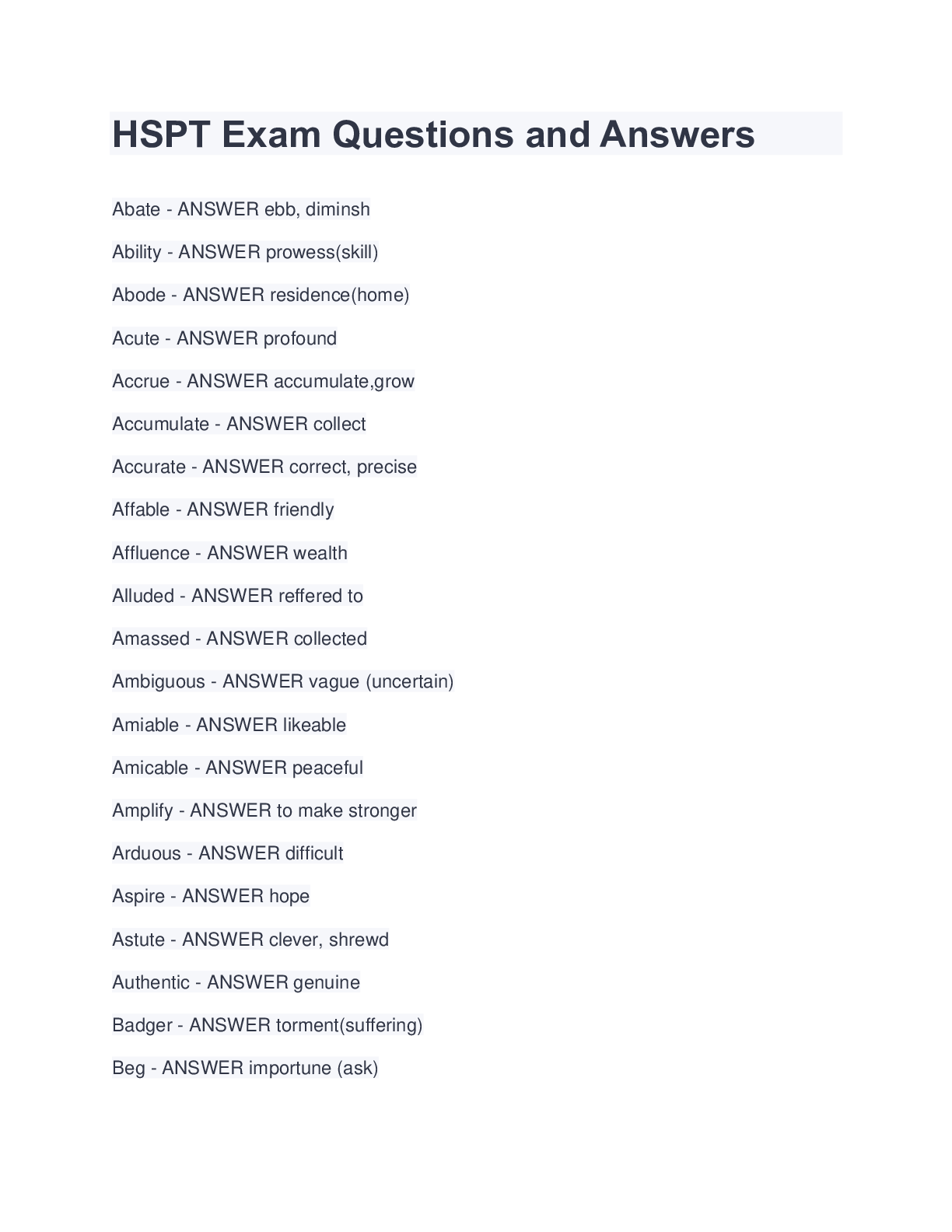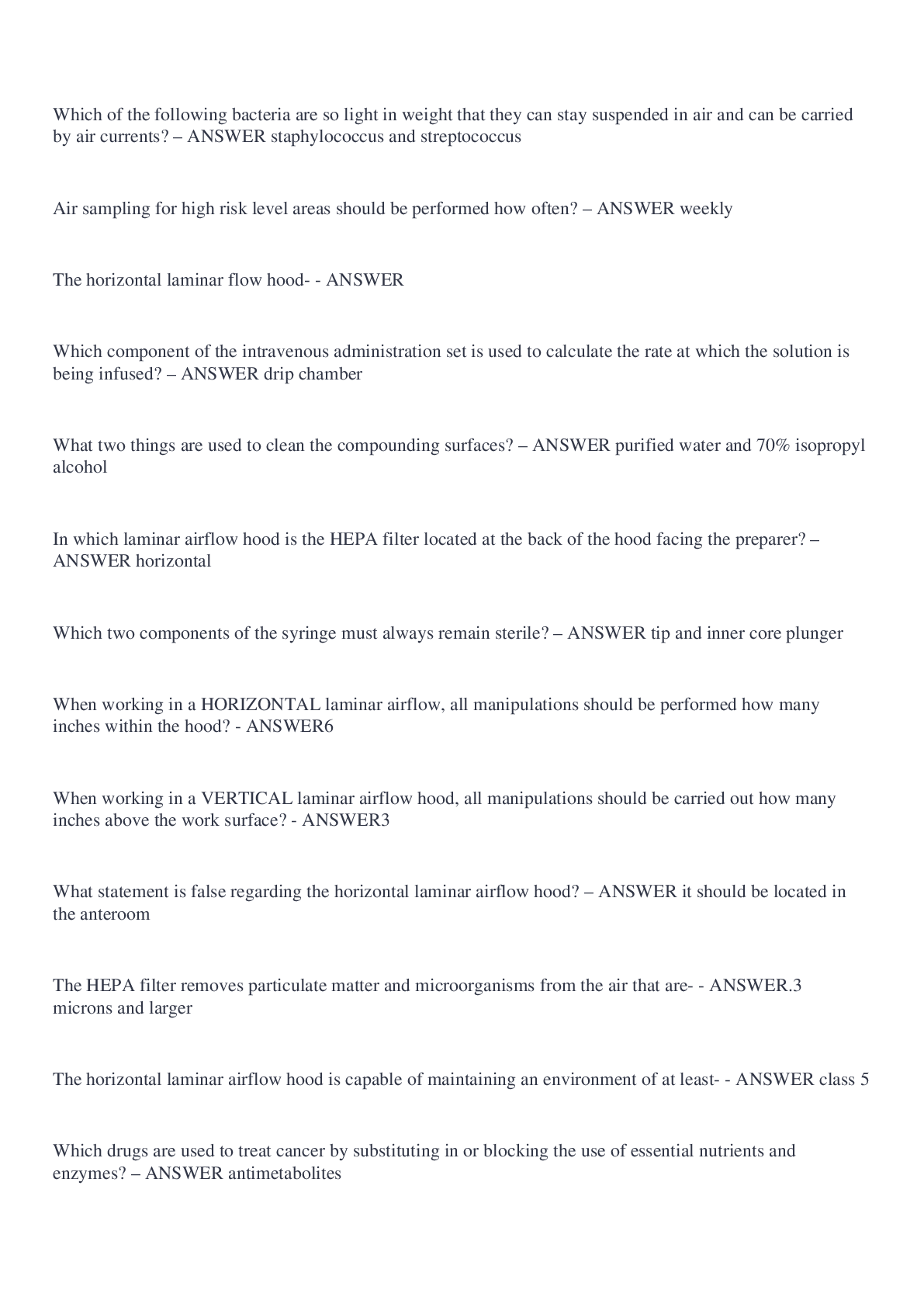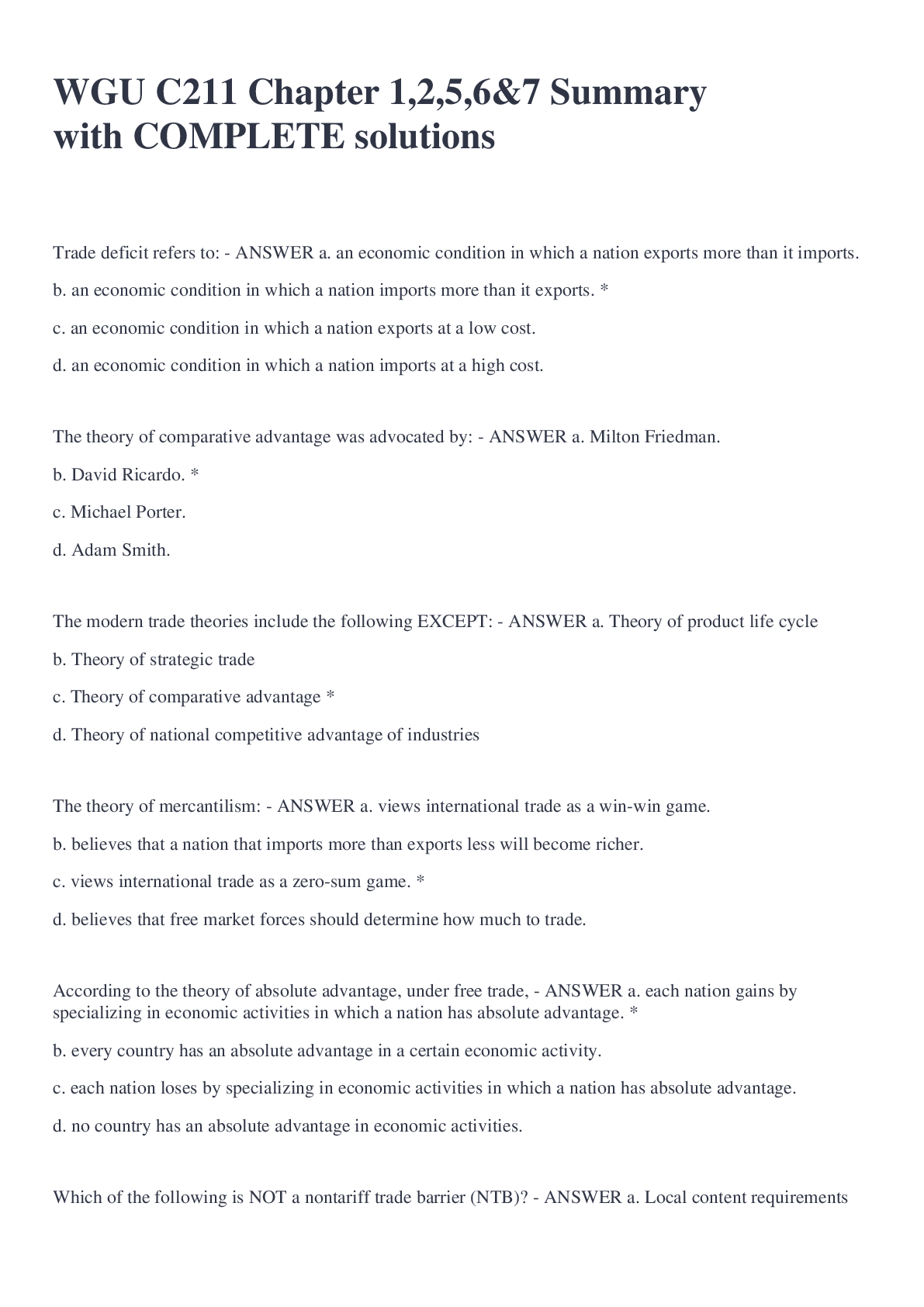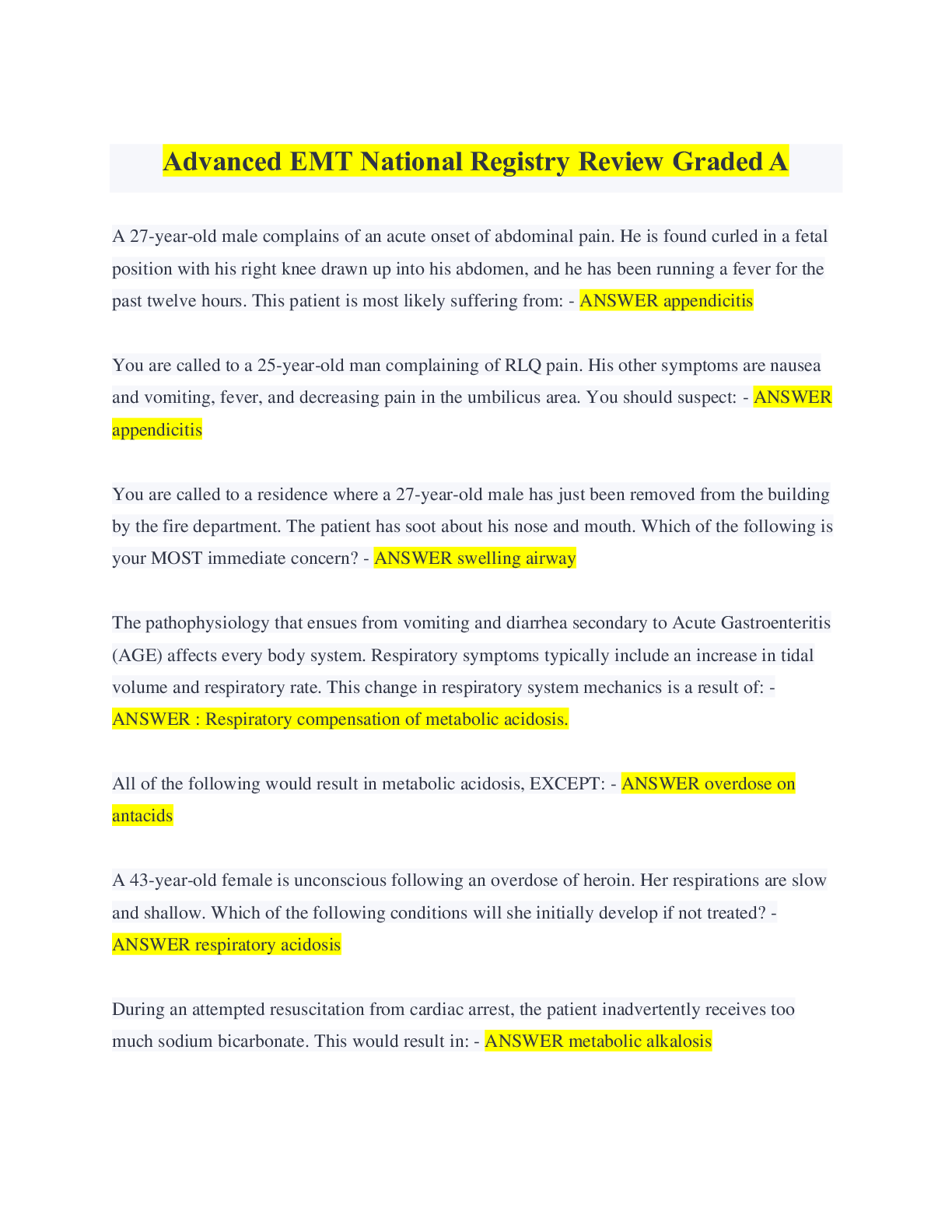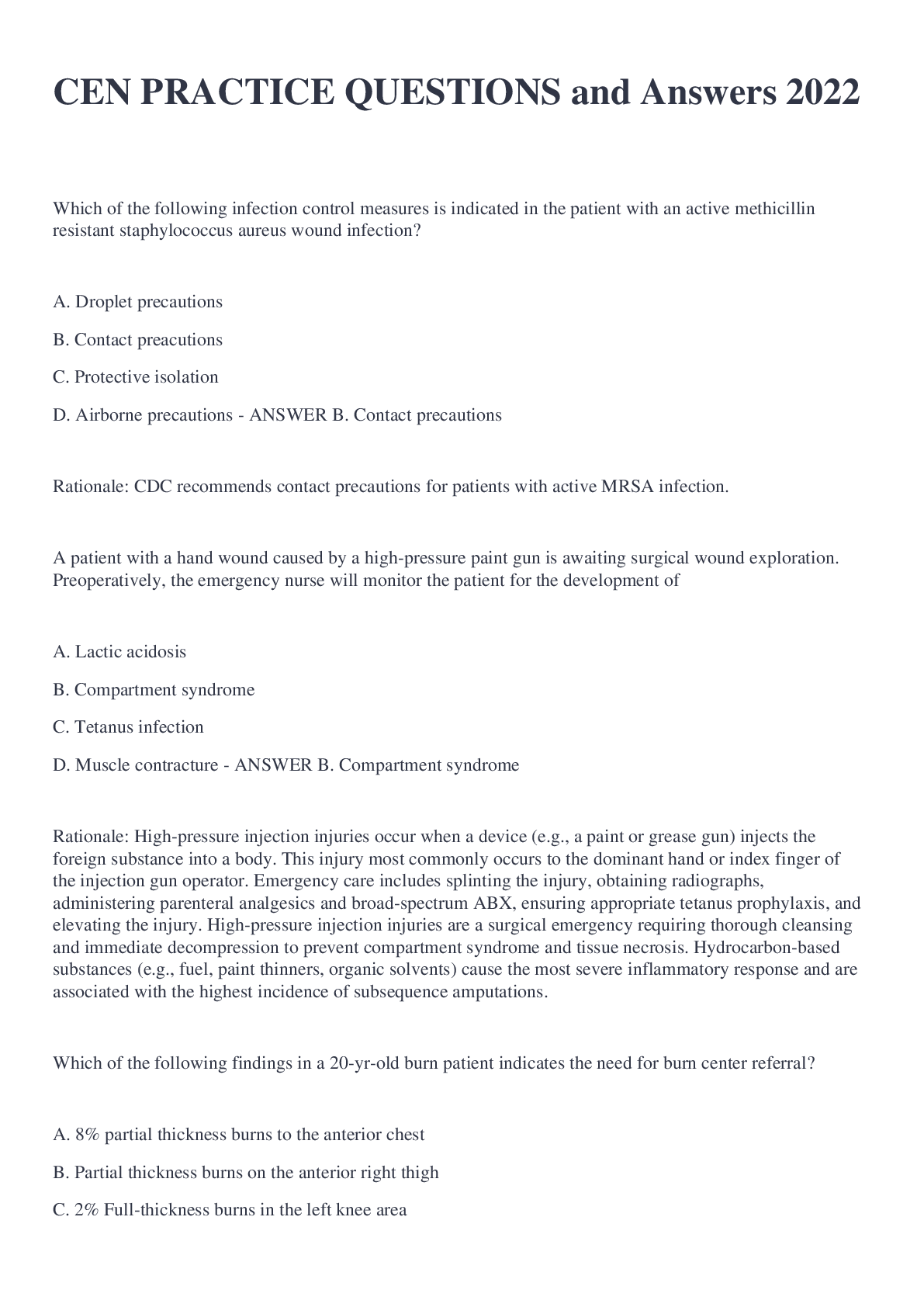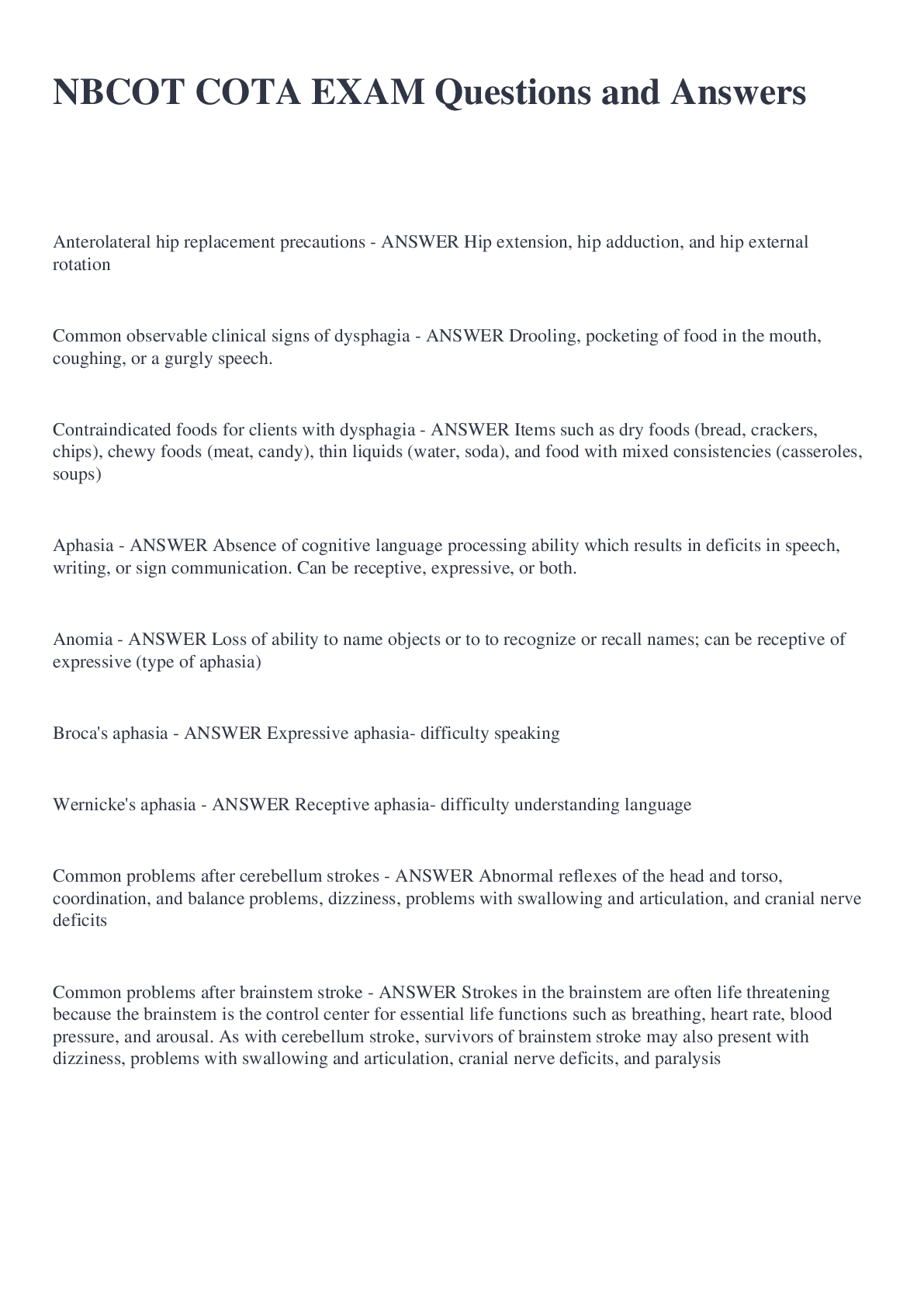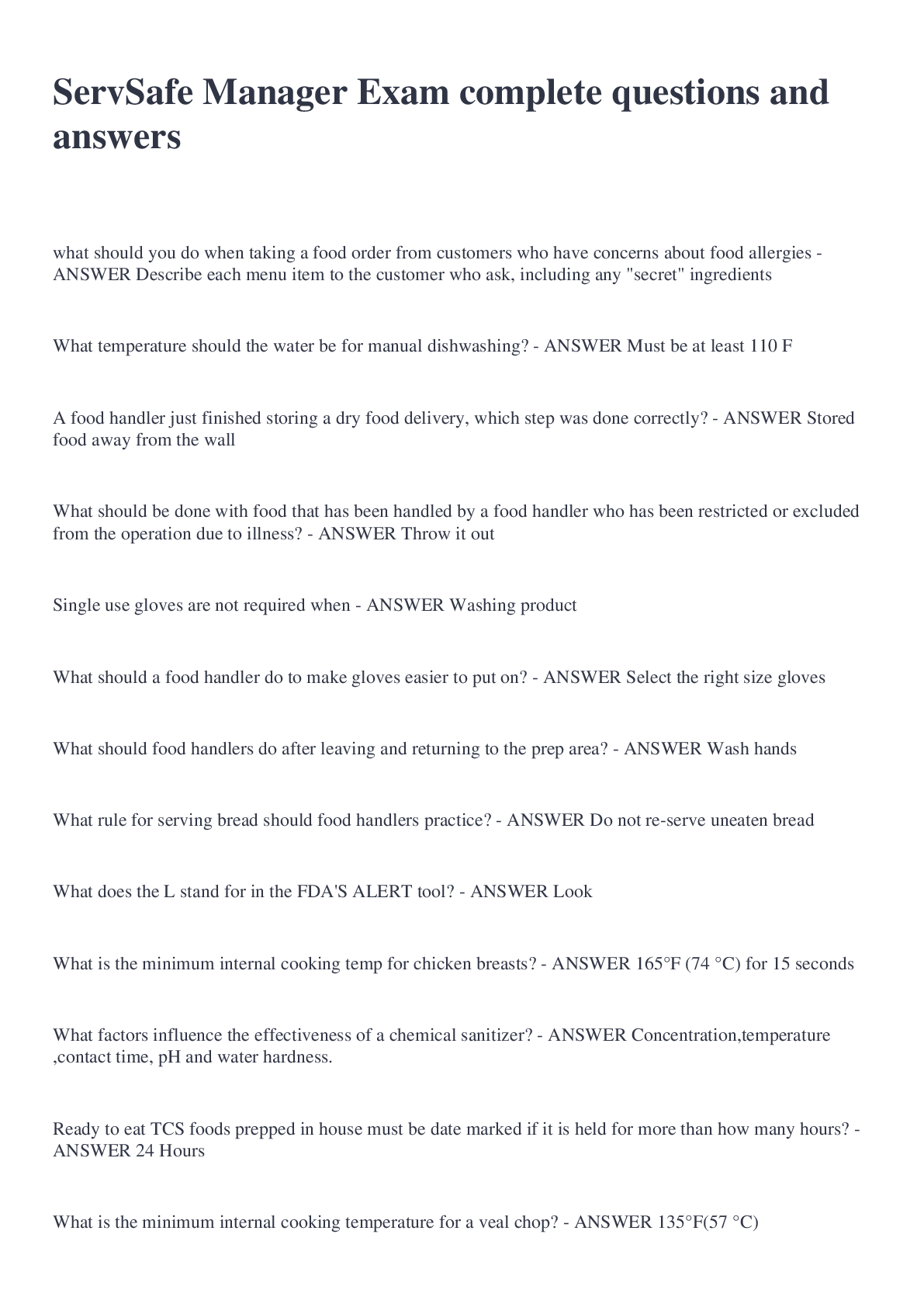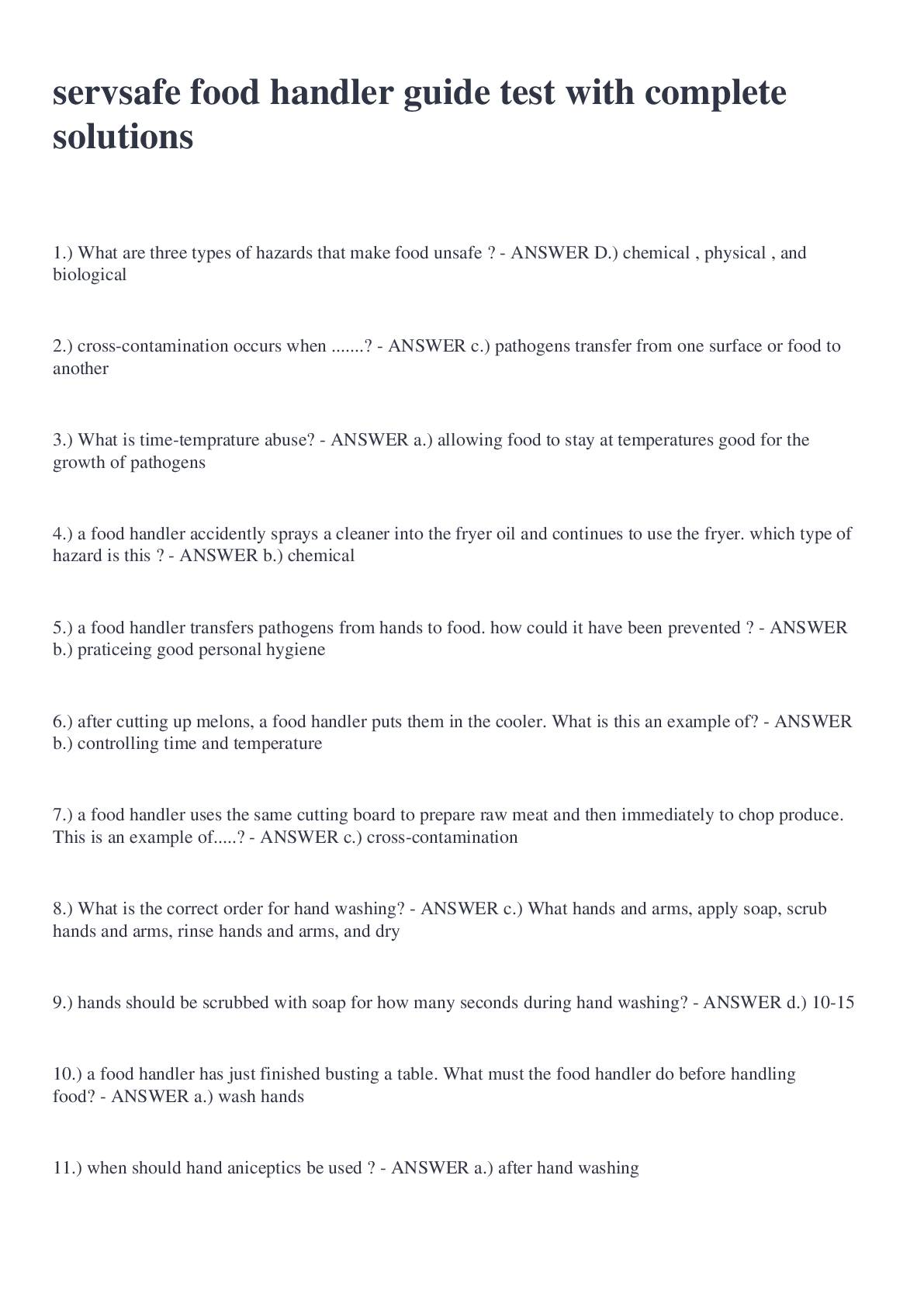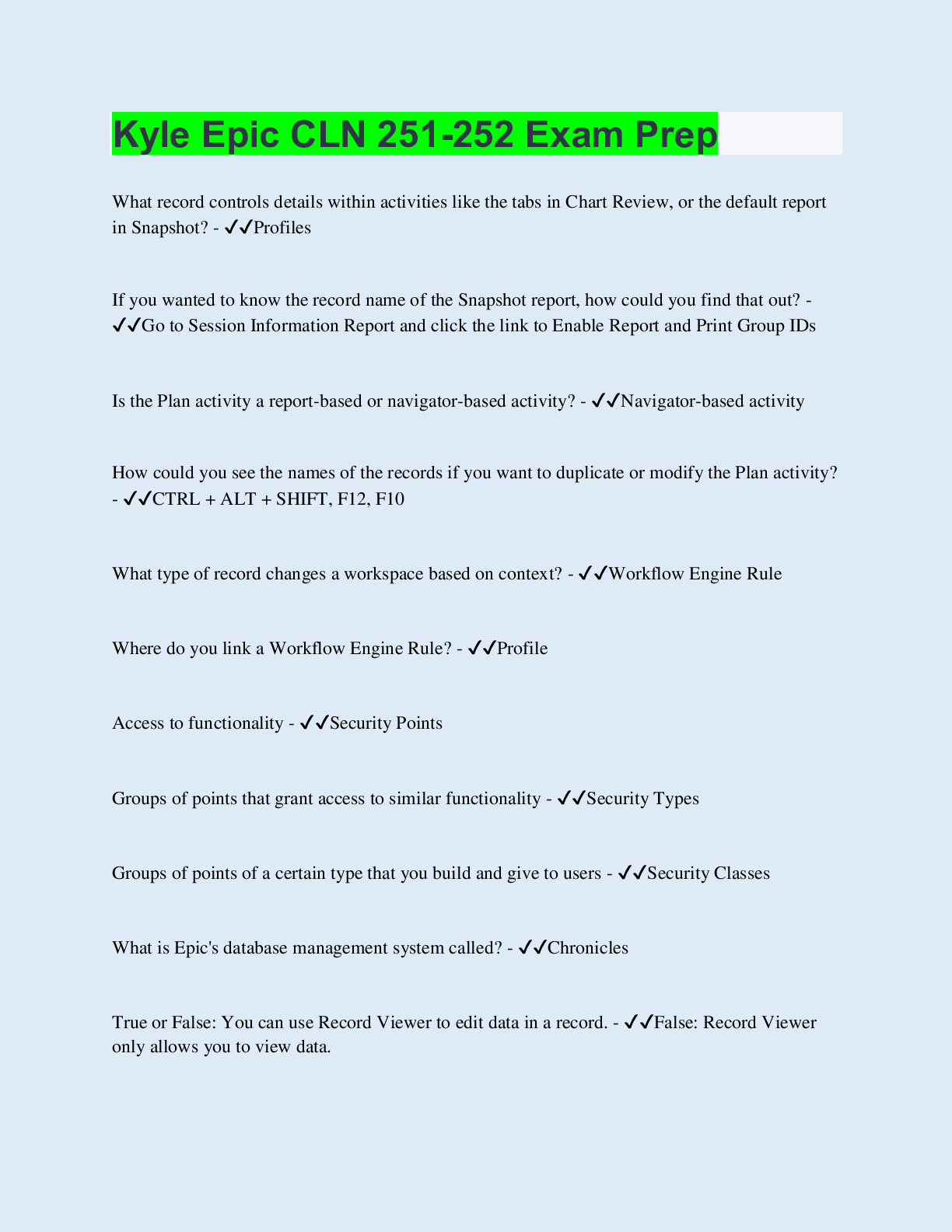GEO 1110 Midterm Practice answered questions 2022
Document Content and Description Below
atomic number - ANSWER number of protons in an element atomic mass number - ANSWER total number of protons and neutrons electrical charge - ANSWER the overall charge of an atom (+, -, or neutral... ) electron number - ANSWER number of electrons in an atom in a natural state (before bonding) ion - ANSWER an atom that has a surplus or deficit of electrons anion - ANSWER atom that have gained electrons making its overall charge negative (i.e. it becomes more negative) cation - ANSWER an atom that has lost electrons making its overall charge positive neutron - ANSWER particles that are grouped with protons in an atom's nucleus having a neutral charge radioactive - ANSWER a substance that loses electrons during the decaying process ionic bonding - ANSWER kind of bonding caused by the attraction of atoms that are oppositely charged covalent bonding - ANSWER kind of bonding characterized by sharing electrons metallic bonding - ANSWER kind of bonding characterized by closely packed atoms with electrons freely moving throughout the crystal crystalline - ANSWER describes a substance in which the atoms are arranged in a regular, repeating, orderly pattern mineral definition - ANSWER solid; crystalline; naturally occurring; chemically and physically distinctive two most abundant elements on earth - ANSWER oxygen and silicon eight most abundant elements on earth - ANSWER oxygen, silicon, aluminum, iron, calcium, sodium, potassium, magnesium isotope - ANSWER version of an element that has a different number of neutrons than is most common gypsum - ANSWER example of mineral that can be scratched with a fingernail fluorite - ANSWER example of mineral that can be scratched with a knife blade apatite - ANSWER example of mineral that can be scratched with window glass feldspar - ANSWER example of mineral that can be scratched with steel file diamond - ANSWER hardest natural substance on earth corundum - ANSWER mineral that is harder than quartz but not as hard as diamond color of mineral - ANSWER most obvious quality of a mineral, but not a reliable classification property streak - ANSWER the color of powder formed when a mineral is crushed or scraped across an unglazed porcelain plate luster - ANSWER the quality and intensity of light that is reflected from the surface of a mineral metallic luster - ANSWER gives the substance the appearance of metal glassy (vitreous) luster - ANSWER a glazed appearance of luster which looks like glass or porcelain earthy luster - ANSWER gives the substance the appearance of earth hardness - ANSWER the scratch-ibility of a substance external crystal form - ANSWER set of faces that have a definite geometric shape cleavage - ANSWER the ability of a mineral to break, when struck or split, along preferred planar directions. fracture - ANSWER the way a substance breaks where not controlled by cleavage specific gravity - ANSWER also called density, the ratio of a mass of a substance to the mass of an equal volume of water special properties - ANSWER characteristics that apply only to a particular mineral, such as striations or double refraction chemical analysis - ANSWER a laboratory test that shows the amount of each element present in a mineral. elements that make up 98% of the earth's crust - ANSWER oxygen, silicon, aluminum, iron, calcium, sodium, potassium, magnesium double refraction - ANSWER special property of that is particularly evident in clear calcite crystal striations - ANSWER special property of plagioclase feldspar magnetism - ANSWER special property of magnetite example of a 3-D framework silicate - ANSWER K-rich, Ca-rich, or Na-rich plagioclase feldspar, and quartz example of an isolated silicate structure - ANSWER olivine example of a single-chain silicate structure - ANSWER pyroxenes and augite example of a double-chain silicate structure - ANSWER amphiboles and hornblende example of a sheet silicate structure - ANSWER biotite mica and muscovite mica silicates - ANSWER minerals which contain Si oxides - ANSWER minerals which contain O, but not bonded with Si, C or S sulfates - ANSWER minerals which contain SO4 carbonates - ANSWER minerals that contain CO3 sulfides - ANSWER minerals that have S, but no O chlorides - ANSWER minerals that have Cl, but not Si, O, S, C halides - ANSWER minerals that contain sodium (?) CaCO3 - ANSWER calcite CaMg(CO3)2 - ANSWER dolomite SiO2 - ANSWER silica NaCl - ANSWER halite silica tetrahedron - ANSWER one ion of silica and four ions of oxygen [Show More]
Last updated: 2 years ago
Preview 1 out of 4 pages

Buy this document to get the full access instantly
Instant Download Access after purchase
Buy NowInstant download
We Accept:

Reviews( 0 )
$7.00
Can't find what you want? Try our AI powered Search
Document information
Connected school, study & course
About the document
Uploaded On
Jul 15, 2022
Number of pages
4
Written in
Additional information
This document has been written for:
Uploaded
Jul 15, 2022
Downloads
0
Views
71

